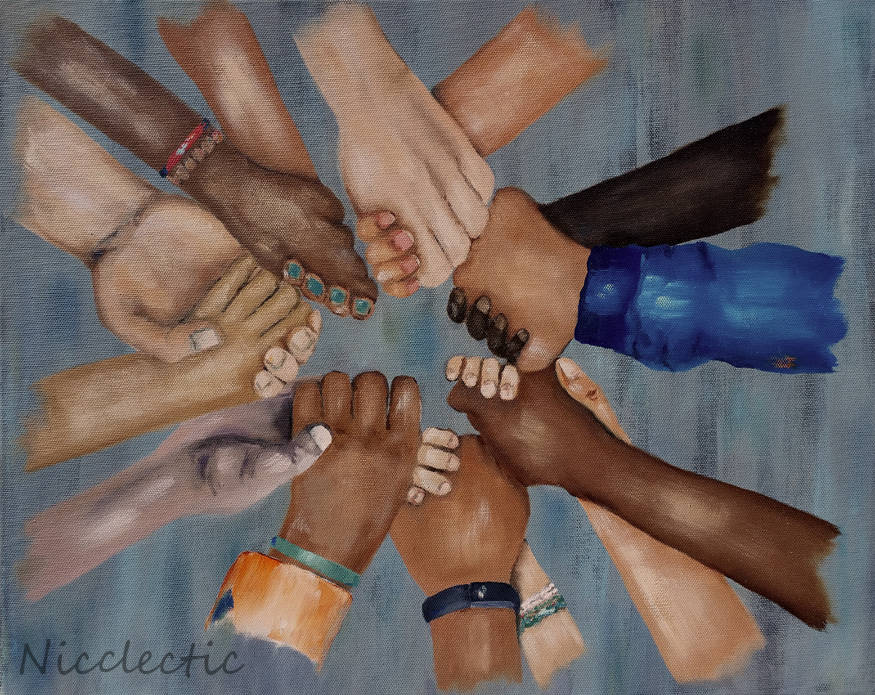
White was one of the first colors used in art. History and art Prehistoric and ancient history Japanese has six different words, depending upon brilliance or dullness, or if the color is inert or dynamic. Sanskrit has specific words for bright white, the white of teeth, the white of sandalwood, the white of the autumn moon, the white of silver, the white of cow's milk, the white of pearls, the white of a ray of sunlight, and the white of stars. The Inuit language has seven different words for seven different nuances of white. Some non-European languages have a wide variety of terms for white. Common Germanic also had the word * blankaz ("white, bright, blinding"), borrowed into Late Latin as * blancus, which provided the source for Romance words for "white" (Catalan, Occitan and French blanc, Spanish blanco, Italian bianco, Galician-Portuguese branco, etc.). The Icelandic word for white, hvítur, is directly derived from the Old Norse form of the word hvítr. The root is ultimately from Proto-Indo-European language *k wid-, surviving also in Sanskrit śveta "to be white or bright" and Slavonic světŭ "light". The word white continues Old English hwīt, ultimately from a Common Germanic * χ wītaz also reflected in OHG (h)wîz, ON hvítr, Goth.

In many Asian cultures, white is also the color of mourning. In Western cultures and in Japan, white is the most common color for wedding dresses, symbolizing purity and virginity. In Islam, and in the Shinto religion of Japan, it is worn by pilgrims. The pope, the head of the Roman Catholic Church, has worn white since 1566, as a symbol of purity and sacrifice. White is an important color for almost all world religions. It was also widely used in 20th century modern architecture as a symbol of modernity and simplicity.Īccording to surveys in Europe and the United States, white is the color most often associated with perfection, the good, honesty, cleanliness, the beginning, the new, neutrality, and exactitude. Greek temples and Roman temples were faced with white marble, and beginning in the 18th century, with the advent of neoclassical architecture, white became the most common color of new churches, capitols and other government buildings, especially in the United States. It was the royal color of the kings of France, and of the monarchist movement that opposed the Bolsheviks during the Russian Civil War (1917–1922). In the Middle Ages and Renaissance a white unicorn symbolized chastity, and a white lamb sacrifice and purity. In ancient Egypt and ancient Rome, priestesses wore white as a symbol of purity, and Romans wore white togas as symbols of citizenship.

The color white can be given with white pigments, especially titanium dioxide. White on television and computer screens is created by a mixture of red, blue, and green light. White objects fully reflect and scatter all the visible wavelengths of light.

It is the color of objects such as snow, chalk, and milk, and is the opposite of black. White is the lightest color and is achromatic (having no hue).

She loves painting & photography, the occasional 5-mile run and feisty discussions across the family dinner table on Sunday evenings.Clockwise, from top left: Beluga whale Pope Francis Milan Cathedral façade White Cliffs of Dover, England Masjid al-Haram, Saudi Arabia Bride at a Shinto wedding. The end result is clean, fresh and modern."īased in Fairfield County, Connecticut, Julia spends most weekends tackling new projects and getting into all sorts of adventures with her little guy, Neo. My goal is to drown out the noise and clutter to find a sense of calm through light. My style is single-minded and focused on the simplicity of beauty in the moment. Combine that dimension with the exploration of color and I’ve just begun to capture something meaningful. In fact, Julia's most recent abstracts focus on deconstructing painted color palette studies through isolated images, and then rebuilding those studies with new form and composition.Ībout her work, Julia says, "When you layer on the paint just right, so that it dances across a wash of another color, a new level of dimension is created. Julia never strayed far from texture, paint and the mixing and layering of mediums, which are important components to Julia's work. Haas Family Arts Library Special Collections(ALSC) in New Haven, CT. Over the years, her eye for composition coupled with her love of painting, design and photography has earned Julia numerous awards in such publications as Photographer's Forum and Creativity along with inclusion into the Yale Robert B. In 2000, Julia earned a Bachelor of Fine Arts degree from Pratt Institute in New York City.


 0 kommentar(er)
0 kommentar(er)
